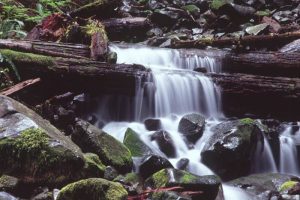Water Pollution: Why Are We Compromising Our H2O?

Water pollution is one of the biggest environmental challenges facing us today. Every day, trash, sewage, industrial waste, agricultural runoff and other types of pollutants seep into the oceans, lakes, rivers streams and other waterways of the world. Just how pervasive is this pollution? An estimated 2 million tons of sewage, industrial waste and agricultural waste enter the world’s waterways every day. About Approximately 8 million tons of plastic ends up in the ocean each year.
All of these contaminants can have a significant impact on our water. Here are eight ways pollution is damaging our water systems.
1. Introducing Pathogens
Sewage and animal waste introduce pathogens to water, which can sicken humans and animals. In developed countries, this problem is relatively rare, but accidental or illegal discharge, as well as agricultural runoff, still occur. In other countries, untreated sewage is often released directly into water sources. Common waterborne illnesses include polio, malaria, cholera and diarrhea, and waterborne diseases kill more than 3.4 million people every year.
2. Introducing Toxins to Wildlife
Other contaminants, including chemicals and heavy metals from industrial wastewater, are toxic to marine life. Some plastics may also contain chemical additives that can seep into the water as they break down. These toxins can reduce organisms’ lifespans and hinder their ability to reproduce. Smaller organisms may ingest these contaminants, and as larger creatures eat those smaller ones, the toxins make their way up the food chain. Eventually, humans may even ingest them.
3. Strangling, Suffocating and Starving Animals
Trash floating in the water can also directly harm marine life include fish, mammals, birds and other forms of life. Animals may get caught in discarded fishing nets or choke on plastic bottle caps. Plastic that washes into streams will eventually make its way to the ocean where it will take a long time to break down. Even as it does break down into smaller and smaller pieces, these tiny pieces can still harm marine life.
4. Depleting Oxygen
Agricultural runoff can increase the level of nutrients, primarily nitrogen and phosphorous, in a body of water, resulting in an algae bloom. As this algae dies off, it causes the dissolved oxygen levels in the water to deplete. Eventually, there is so little oxygen that marine life can’t survive. This creates what is known as a dead zone. Some types of algae blooms also release harmful toxins into the water.
5. Increasing Acidity
In addition to contributing to the greenhouse effect, some of the carbon dioxide we release when generating electricity from fossil fuels ends up in the ocean. Scientists estimate that the sea absorbs about one-quarter of manmade CO2 emissions from the air. The result is that the ocean is becoming more acidic. This change in acidity can interfere with some sea creatures ability to form shells. A high ph can also contribute to the degrading of coral reefs.
6. Raising Temperatures
Rising ocean temperatures due to global warming are also affecting coral reefs. As the average global temperature increased by around 1°F over the past century, the temperature of the oceans has increased by about 0.18°F. Even relatively small increases in temperatures can cause coral reefs to bleach, a condition in which they eject their symbiotic algae. Bleaching makes them more vulnerable to disease and may cause reefs to die off. Krill, an important part of the bottom of the ocean food chain, also reproduce less in warmer temperatures.
7. Blocking Sunlight
Pollution can also block sunlight from reaching marine plants. If these plants can’t get adequate sunlight for a long period, they will die off. This effect is most pronounced when an oil spill occurs, but algae blooms and large collections of plastic waste can also block sunlight from penetrating into the water.
8. Making Water Unusable for Humans
Water pollution doesn’t just affect the animals and plants that live in that water. It also affects the life on land that depends on that water for survival, including humans. As mentioned earlier, contaminated water sources can cause disease and even death. It can also have severe economic impacts. Many people depend on waterways as a source of food or income. Pollution makes fishing more difficult and discourages water-based recreation, which some coastal communities depend on to make a living.
There many ways in which pollution affects our water and, in turn, harms all forms of life, including humans. We need to continue to address this problem and reduce the amount of pollution that enters our waterways — for the sake of ourselves and our environment.
Emily Folk is the editor of Conservation Folks. She writes on topics of sustainability, conservation and green technology.

